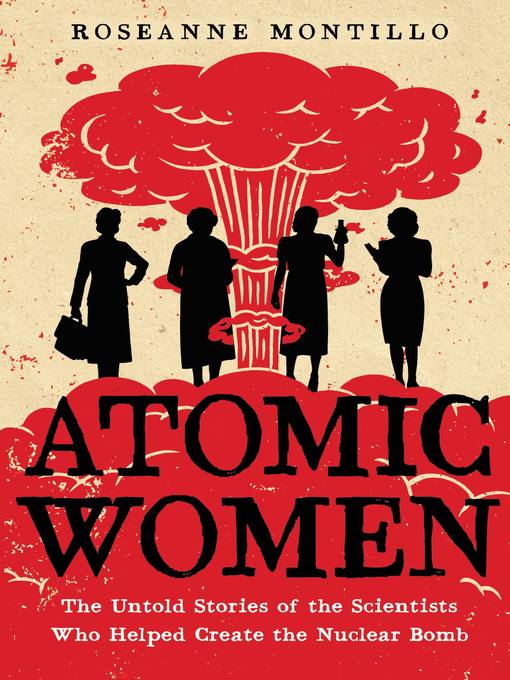
Atomic Women
The Untold Stories of the Scientists Who Helped Create the Nuclear Bomb
کتاب های مرتبط
- اطلاعات
- نقد و بررسی
- دیدگاه کاربران
نقد و بررسی

January 1, 2020
Gr 6-8-Montillo begins the narrative with Marie Curie's radium discovery and then discusses the prevalent sexism Curie faced as a working mother. Because of sexism, many believed that her husband, Pierre, copublished scientific papers and discoveries only out of a sense of matrimonial duty. The author also unpacks the societal perceptions of some of the most important women in science at that time, including Lise Meitner, Irène Joliot-Curie, and Joan Hinton. Many did not receive praise or funding, were cast aside to closet-sized labs, and often worked without payment or university acknowledgment. They were motivated by their love of science and learning despite the judgment of critics that labeled these women odd, unfeminine, or incapable. The book contains a running theme of women who were dismissed while their male spouses and colleagues moved ahead, but also spotlights perseverance and genius. When some of these women were asked to work on the top-secret Manhattan Project, many seemed uncertain. The world was in the midst of war, and while the immediacy of their creation was felt by all, the future implications seemed dire. Montillo's detailed and organized writing stresses the importance of these women, who were as indispensable to the Manhattan Project as more well-known men like J. Robert Oppenheimer and Enrico Fermi. The detailed back matter includes an author's note, a scientific time line, source notes, and bibliography. VERDICT A general purchase, especially for libraries where narrative nonfiction does well.-Kristyn Dorfman, The Nightingale-Bamford School, New York City
Copyright 2020 School Library Journal, LLC Used with permission.

March 1, 2020
Intertwining stories of the often ignored female scientists whose research led to the creation of the atomic bomb. Montillo begins with Marie Curie, the one female physicist most people can name. After identifying, isolating, and purifying the first known radioactive elements--radium and polonium--she and her husband, Pierre, shared the 1903 Nobel Prize in physics. Readers may not be aware that fellow French scientists conspired to keep her name off the award, believing incorrectly that she only assisted Pierre. Their daughter, Ir�ne Joliot-Curie, would also win a Nobel Prize for her work with radioactive elements. Austrian Jew Lise Meitner fled to Stockholm to escape the Nazis, where she did mathematical work proving the possibility of nuclear fission. As World War II progressed, America began to explore the possibility of weaponizing nuclear energy, and the Manhattan Project began. American physicist Leona Woods helped perform the first nuclear chain reaction while Joan Hinton built elements of the first nuclear reactor. Montillo tells their stories--along with those of many other women--in this comprehensive work. The narrative bounces back and forth in time, sometimes in ways that may confuse readers, and, unfortunately, it ends with the nuclear bombs falling on Hiroshima and Nagasaki--it would have been nice to read something about what these women achieved afterward. Still, the book is lively, well-researched, and comprehensible. A useful work of scientific history. (author's note, timeline, source notes, bibliography, index) (Nonfiction. 12-18)
COPYRIGHT(2020) Kirkus Reviews, ALL RIGHTS RESERVED.

April 20, 2020
On a July morning in 1945, Joan Hinton saw a world-changing explosion: “It was like being at the bottom of an ocean of light.” Hinton, a physicist, was one of the many women scientists integral to the development of the atomic bomb whose stories anchor Montillo’s (Fire on the Track for adults) narrative in two sections. The first, set in Europe, traces the origins of nuclear science, introducing Marie Curie, whose findings “would have... devastating consequences in the rush to build the atomic bomb,” and Lise Meitner, whose theory of fission underpinned the bomb effort. The second section, set in the U.S., focuses on the women scientists developing the bomb, including Hinton. In blunt, declarative prose, Montillo sketches lives and careers. Sexism (“ noticed that female students... were tolerated more than included”) and deep ambivalence about the bomb (“How would she be able to live with it herself?”) recur as themes. Nonchronological editorial choices, a full-to-bursting cast of characters, and a tendency to breeze past scientific concepts (including beta decay, Brillouin zones, and even the workings of the bomb itself) without explanation make understanding the scope and impact of these women’s contributions difficult. Still, Montillo’s woman-centered narrative fills a major gap in the popular understanding of how the atomic bomb came to be. Ages 12–up. Agent: Rob Weisbach, Rob Weisbach Creative Management.

May 15, 2020
Grades 7-10 While the past few years have brought increased awareness of women who contributed to America's space program, many women also played important roles in building the first nuclear bomb. Montillo begins with European scientists such as Marie Curie, Ir�ne Joliot-Curie, and Lise Meitner, whose experiments with radioactivity and work in theoretical physics were seminal. German-American physicist Maria Goeppert-Mayer and Hungarian-American plutonium expert Elizabeth Rona, along with many American women physicists and graduate students recruited for the Manhattan Project, contributed to actually creating the bomb. With so many people discussed and so many back-and-forth shifts among their stories, some confusion is inevitable. But readers familiar with 20th-century science history will be fascinated by the detailed account of the intertwined European scientific communities and the prejudices and difficulties routinely faced by women scientists. Equally interesting is the depiction of the atmosphere within the "Tech Area" at Los Alamos, especially surrounding the Trinity nuclear test and, weeks later, the bombing of Hiroshima and Nagasaki. A well-researched book on women scientists and their roles in developing the atomic bomb.Women in Focus: The 19th in 2020(Reprinted with permission of Booklist, copyright 2020, American Library Association.)

























دیدگاه کاربران